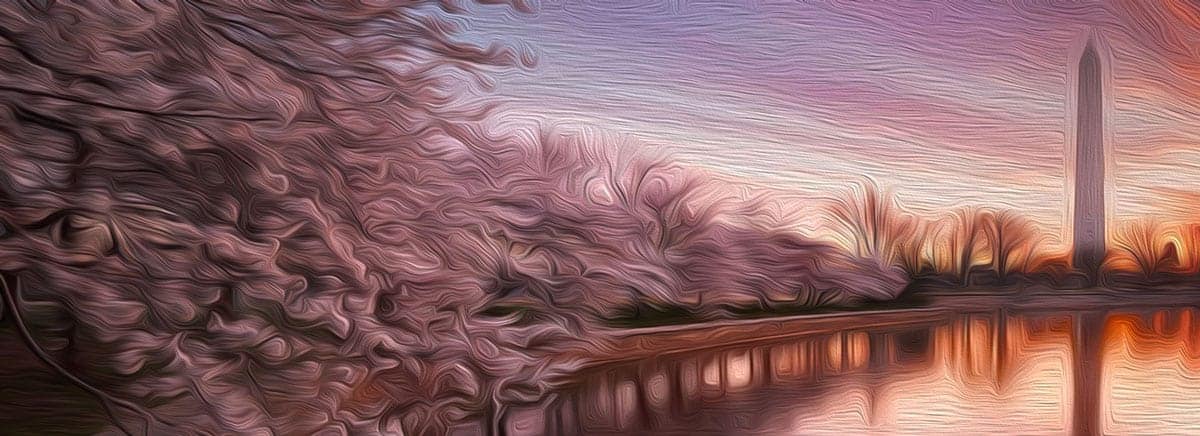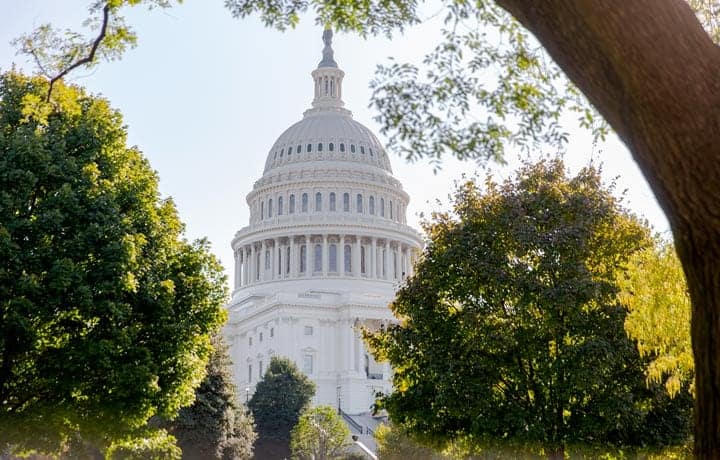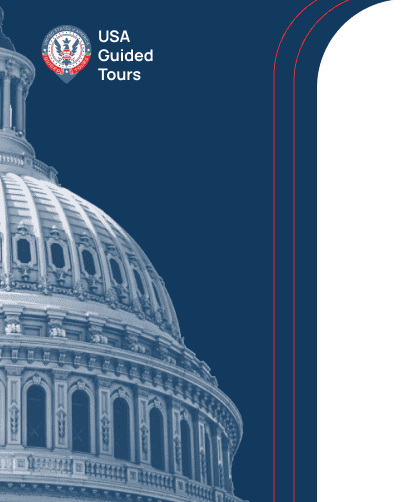With a year that seems to have thrown many challenges our way, 2020 marked a major milestone worth celebrating: the 100th anniversary of the 19th Amendment granting women the right to vote. Propelled by the women’s suffrage movement, on August 26, 1920, the US Constitution was amended to finally lift the barriers that prevented women from participating in the election process.

Propelled by the women’s suffrage movement, on August 26, 1920, the US Constitution was amended to finally lift the barriers that prevented women from participating in the election process.
The right for women to cast their ballots wasn’t achieved easily. From the moment that the United States was founded, women were excluded from being able to own land, control money, or vote. It took over a century-long fight that included several suffrage organizations, mobilization amongst individual states, as well as countless diverse women who never gave up hope for equal rights. The impact of those relentless pioneers can be witnessed in the political landscape today.
Women aren’t only casting ballots, they’re on them. Along with many firsts of women elected as mayors, senators, and representatives, we have also witnessed the first female of color vice president nomination on a major party ticket in the country’s history. In an election year that’s sure to shape the future of the country in a monumental way, let’s look back on the powerful women’s suffrage movement that opened the door for today’s female voters and politicians.
To honor the women who played a large part in the 19th Amendment, a statue was revealed in Central Park in New York City exactly 100 years to the date of its ratification. The first of its kind, as it’s the first statue depicting non-fictional females in the park, the Women’s Rights Pioneers Monument shows Sojourner Truth and Elizabeth Cady Stanton sitting at a table while Susan B. Anthony stands between them. While Truth, Stanton, and Anthony are the face of women’s rights in Central Park, the women’s suffrage movement was as vast and diverse as the country itself.

While Truth, Stanton, and Anthony are the face of women’s rights in Central Park, the women’s suffrage movement was as vast and diverse as the country itself.
Even though American Indians were not legally allowed to become citizens in the late 1800s, the women of six Iroquois nations inspired many suffragists, including Stanton, due to the political power and social equality they had within their own tribes. With territories in upstate New York, Iroquois women not only controlled the land and food operations, but they were also included in major decisions, voted for and disciplined chiefs, and could even veto wars. When their neighboring Seneca suffragists saw the influence the women had, it inspired them to fight a future where they too had a say in the country’s democratic process.
At just the age of 16, Mabel Ping-Hua Lee had become a sought-after voice of the women’s suffrage movement with interviews and features in the New York Times and New York Tribune. After Ping-Hua Lee moved from China to New York City with her family she went on to attend Barnard College. There she joined the Chinese Students Association and wrote essays in the school’s paper rallying the Chinese community to support women’s participation in the democratic process. As a prominent women’s rights figure, she led tens of thousands of participants through New York City on horseback during a 1912 suffrage parade.

On the other side of the country, a growing number of Spanish American suffragists were gaining ground in New Mexico. With Spanish speakers making up half of the state, National Woman’s Party-state vice-chair Nina Otero-Warren pushed for the inclusion of Spanish speaking women in the movement, gained national attention for a march ending at the house of a US Senator, helped pass state legislation for women to vote, and went on to become a Congressional nominee. The efforts of the Hispanic suffragists led to New Mexico being one of the 36 states that backed the 19th Amendment and were a driving force for it being passed on a federal level.
Before leading marches and putting pressure on local officials across the country, suffrage advocates and leaders gathered to discuss their vision for the future of women’s rights. Originally connecting on the issue of abolishing slavery, five women organized a meeting to discuss the advancements of civil, religious, and social liberties for women.

Originally connecting on the issue of abolishing slavery, five women organized a meeting to discuss the advancements of civil, religious, and social liberties for women.
Stanton, Mary M’Clintock, Jane Hunt, and Lucretia Mott along with her sister Martha Coffin Wright put together the Seneca Falls Convention on July 19 and 20,1848 to discuss nearly a dozen resolutions on women’s rights. The first day of the convention was reserved for women but on the second it was open to all. While organizing the event, Stanton, along with the input from other organizers, drafted the convention’s manifesto titled the Declaration of Sentiments in which they addressed the disparities that made women feel inferior along with their resolutions and called on women to fight for their own equality.
The declaration spread throughout the country and kicked off several more conventions including the first National Women’s Rights Convention in 1850, organized by Lucy Stone and a group of Eastern suffragists, in Worcester, Massachusetts. Two years later, Stanton and central women’s rights leader Susan B. Anthony would join forces for the first time to hold another convention in Syracuse, New York. Momentum for women’s suffrage was at an all-time high throughout the ‘50s but was quickly diminished at the start of the Civil War in 1861.
After the war ended in 1865, several women’s rights organizations were formed to reinvigorate the suffrage movement. The National Woman Suffrage Association was founded by Stanton and Anthony in 1869 with the objective of securing women the right to vote by amending the Constitution. That same year, the American Woman Suffrage Association founded by Stone focused more on achieving women’s suffrage in individual states. In 1890, both organizations joined forces to become the National American Woman Suffrage Association (NAWSA). Through the efforts of this newly formed venture, securing women their right to vote through state legislation provided more of a push to pass legislation on a national level.
Wyoming was one of the last states to join the Union in 1890 – also referred to as the North – but was the first state that allowed women the right to vote. The momentum continued across the Union for the next two decades to grant women their voting rights in local and state elections. By 1918, women had achieved suffrage in 14 additional states. As more and more members of state Congresses were elected, many by women constituents, those same officials were pressured to fight for an amendment to the Constitution.
Yet another battle, World War I, slowed the progression of the women’s suffrage movement but once it was over, women were able to leverage their integral work in the war to proclaim that they were just as deserving of the same rights as men. Amendments to the US Constitution were introduced into Congress both in 1878 and 1914. On the first attempt, the amendment received close to no support while the second introduction fell just 11 votes shy of the majority of the votes needed to pass in the Senate.
In the years that followed several marches, demonstrations and sit-ins broke out across the country. In 1916, coordinated campaigns involving state and local suffrage organizations were put into motion by NAWSA president Carrie Chapman Catt. Around the same time, a fringe group called the National Woman’s Party created by Alice Paul employed more radical measures including hunger strikes and White House pickets to garner attention.
With the national, bipartisan support of women’s suffrage reaching its pinnacle point, the amendment finally received the majority of votes it needed to pass in Congress on June 14, 1919. It wasn’t until Tennessee’s approval in early August the next year that the Nineteenth Amendment was finally ratified to the Constitution on August 26, 2020. Millions of women in the US were finally given the national right to vote.
Even though many women of the suffrage movement were able to celebrate the monumental milestone that removed the restriction to vote based on sex, the victory didn’t extend to women of color. Despite the 15th Amendment being passed in 1870 that citizens couldn’t be denied the right to vote based on race or color, federal and state policies were introduced over the following decades that prevented people of color from casting their ballots. While the 19th Amendment was an inclusive addition to the Constitution, many amendments before it stood in the way of many women being able to vote.

Even though many women of the suffrage movement were able to celebrate the monumental milestone that removed the restriction to vote based on sex, the victory didn’t extend to women of color.
In 1876, the Supreme Court deemed Native Americans ineligible to become citizens deeming them ineligible to vote. Native Americans were granted citizenship in 1887 through the Dawes Act, but only if they gave up their tribal affiliations. Unrestricted citizenship was finally granted to Native Americans when the Indian Citizenship Act was passed in 1924 but many states responded by introducing laws and policies that made it impossible for them to vote. Thanks to the work of suffragists such as Gertrude Simmons Bonnin (Zitkala-Ša), Native women were finally able to vote when the last state of Utah fully granted voting rights for Native citizens in 1962.
Chinese American women were also excluded from voting due to the 1882 Chinese Exclusion Act barring Chinese nationals from becoming citizens. The efforts of activists such as Ping-Hua Lee and Dr. S. K. Chan, president of an Oregan equal suffrage society for Chinese Americans who helped pass suffrage for Chinese women in the state, continued to push the narrative for citizenship rights. When the Immigration and Nationality Act of 1952 was passed, Chinese descendants were at last allowed to naturalize, granting them the right to vote.
Black female voters faced voting opposition for 45 more years after the ratification of the 19th Amendment. Common deterrent tactics ranged from voting taxes and literacy tests that targeted African Americans to extremes such as violence and intimidation. An early activist for suffrage and civil rights movements, Mary Church Terrell spoke at NAWSA events and encouraged Black women to join the fight for equal voting and civil rights. The relentless work of leaders across the country led to the Voting Rights Act of 1965 that abolished discriminatory voting practices and opened the door for African American citizens to vote.
One hundred years after the 19th Amendment was ratified, women are continuing to make an impact on the political landscape of the country. The long road to suffrage opened the door for women to achieve equal representation as well as equal opportunity. The last century has been filled with many firsts for female politicians across the country.

One hundred years after the 19th Amendment was ratified, women are continuing to make an impact on the political landscape of the country.
In 1925, Nellie Tayloe Ross of Wyoming was elected as the nation’s first woman governor. Nominated by her running mate Walter Mondale for the 1984 presidential election, Geraldine Anne Ferraro became the first female nominee for vice president on a major party ticket. Maine politician Olympia Snowe became the first woman to win all four elections for State House, State Senate, U.S. House, and U.S. Senate in 1994. In 2018, women broke records with the highest number of females in Congress (127) as well as the first Native American women, Muslim women, and youngest female member ever. Still today, Nancy Pelosi is serving as the first female Speaker of the House.
The nomination of Kamala Harris as the first woman of color vice president of the US on a major party ticket is surely the fruition of the wildest dreams of the women who led the suffrage movement. The struggles, battles, and triumphs of the women who helped achieve equal voting rights should inspire us all to exercise our right to vote in what is sure to be one of the most impactful elections in American history.
Informed voting is one of the greatest tools each individual citizen has to build the future they want to see. With this being an election year, you can head to local and federal candidates’ websites to learn more about where they stand on issues that are important to you or take a look at websites that house information on candidates at every level for each state such as Ballotpedia or BallotReady. Each ballot cast makes up one piece of the puzzle in the legal landscape that shapes communities across the country. To check out if you’re registered to vote or to see voting options in your state you can visit Vote.gov.
Serita Braxton, USA Guided Tours Blog Contributor

